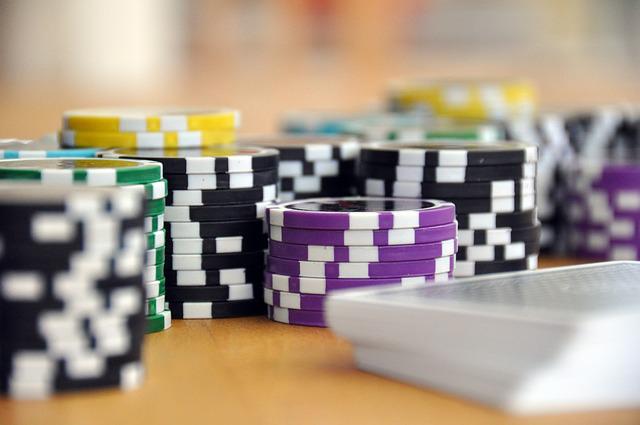There’s a certain magic to gathering around the table with friends for a poker night. The energy, the strategy, the suspense – it’s an experience like no other. An integral part of this gaming excitement comes from the tactile and visual experience of the poker chips set.
The very touch of the chips, their unique sound when they stack or scatter, and their distinct colors all contribute to the overall atmosphere of the game. However, imagine if these chips were a direct reflection of your style and personality.
Creating your own poker chips set offers a way to elevate your poker games, adding a personal touch and an additional layer of enjoyment to the experience. This process allows you to delve deep into your creativity while making strategic choices that suit your preferences. Whether you’re a casual player hosting occasional games or a more serious poker enthusiast, designing your poker chips set can add a new dimension to your poker encounters.
So, let’s delve into the fascinating process of designing your own poker chip set, or you can see more at PokerChips.com.
Step 1: Determine the Chip Types

The foundation of your poker chip set begins with the type of chip you choose. This decision influences both the aesthetic and tactile aspects of your gaming experience. The most common chip types include clay, ceramic, and plastic.
Clay chips have been a mainstay in the world of poker for decades. They offer an authentic casino-like feel and a pleasing sound when clinked together. However, they are more susceptible to wear and tear over time.
Ceramic chips are relatively newer entrants to the poker scene. They are more durable than their clay counterparts and allow for various customizations. However, they may lack the traditional feel that some poker purists might prefer.
Plastic chips are the most economical option. They offer durability but may not provide the same premium feel or sound that clay or ceramic chips do.
Understanding the pros and cons of each chip type will guide your decision-making process and shape the overall aesthetic of your poker chip set.
Step 2: Select the Chip Colors and Denominations
The colors and denominations of your poker chips are more than just an aesthetic consideration; they directly impact the flow and ease of the game. Familiarity and simplicity are key elements to remember here.
Traditional poker chips follow a standard color coding system where white represents $1, red $5, blue $10, green $25, and black $100. This color-coding system is universally recognized and aids in keeping the game accessible and straightforward.
However, in designing your personalized poker chips set, you’re not confined to these standard hues. You are free to experiment and innovate with the entire spectrum of colors. Maybe lavender or turquoise chips resonate more with your personality, or perhaps a grayscale set seems more appealing to your style.
You can choose any color under the sun for your set, ensuring they are distinctive and correspond well with their values. It’s essential to balance creativity with practicality so that the gameplay remains fluid and intuitive.
Moreover, you can go a step further and introduce unique denominations suited to your game’s betting structure. Customized denominations can cater to your gaming style, whether low-stake friendly games or more high-stakes competitive rounds.
This flexibility allows your poker chips set to adapt to your poker dynamics, further personalizing your poker experience. Remember, a well-thought-out selection of chip colors and denominations will not only reflect your personality but also seamlessly facilitate the progress of the game.
Step 3: Decide on the Design

Designing your poker chips allows your creativity to shine truly. This step can express your aesthetic, an homage to your favorite poker inspirations, or even a branding opportunity if you’re creating a set for a specific group or club. Your design could range from something as straightforward as your initials to more complex creations like custom artwork or intricate patterns.
A minimalist approach with clean lines and a sleek design can evoke an air of sophistication and elegance. Conversely, you could opt for a more ornate, detailed design that tells a story or captures a particular theme. The key is to ensure that your chosen design aligns with your tastes and the atmosphere you aim to create during your poker games.
Furthermore, you may keep a consistent design throughout your set or switch it up for different denominations. Different designs can add an element of surprise and interest to your set, enhancing the visual appeal while distinguishing one chip’s value from another.
Step 4: Include Security Features
Introducing security measures to your poker chip set adds a layer of authenticity and prevents others from sneaking their chips into your game. You can consider UV markings visible only under UV light, embedded microchips, or unique serial numbers.
However, remember that security features can add to the complexity and cost of your set. Evaluate the need for such measures based on the seriousness and frequency of your poker games.
Step 5: Order a Sample

Before making a bulk order, it’s wise to order a sample chip or set. This allows you to examine the physical aspects – weight, texture, print quality, and overall aesthetics – firsthand.
Having a sample also provides an opportunity to make necessary changes or adjustments. After all, it’s better to fine-tune a single sample chip than to discover an error or dissatisfaction in a full order.
Step 6: Place Your Order
Once you’ve approved your sample, it’s time to order your complete set. Estimate the number of chips you need based on your typical game size. Generally, about 50-100 chips per player are sufficient. Order a few extra to cater to possible loss or damage.
Conclusion
Designing your own poker chip set is a unique journey that combines creativity and strategy. With careful consideration of the chip type, colors and denominations, design elements, security features, and quantities, you can create a set that is uniquely you. A custom poker chips set not only personalizes your gaming experience but can also be a thoughtful gift for another poker aficionado.







